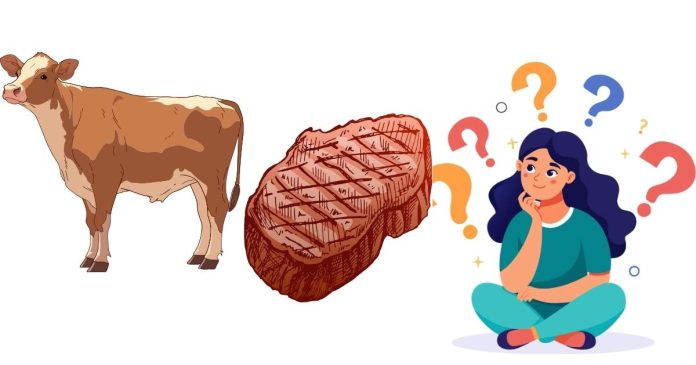The ribeye steak is one of the most popular and flavorful cuts of beef, known for its marbling, tenderness, and rich taste. Whether grilled, pan-seared, or cooked on the barbecue, ribeye steaks are a favorite choice for meat lovers. But have you ever wondered where exactly this prized cut comes from on the cow? In this article, we’ll dive into the specifics of the ribeye, including where it’s located and what makes it so special.
The Ribeye Cut: Where Does It Come From?
The ribeye steak is derived from the rib section of the cow, specifically the rib primal. This primal cut is located in the middle of the cow’s back, just behind the chuck (shoulder) and in front of the loin (lower back). The ribeye comes from the portion of the cow between the 6th and 12th ribs and is known for its high-fat content and exceptional tenderness.
Breaking Down the Ribeye
The ribeye steak is typically cut from the rib primal but can vary in its exact portion depending on how it’s prepared. When the rib primal is divided, it can be further broken down into several different cuts:
- Ribeye Steak: This is the boneless version of the ribeye, known for its rich marbling and tender texture. The marbling refers to the streaks of fat within the muscle that melt during cooking, adding flavor and moisture.
- Bone-In Ribeye (Cowboy Steak): This cut includes the rib bone, giving the steak a dramatic presentation. The bone is left intact, offering added flavor and visual appeal. The bone-in version of the ribeye is also referred to as a “cowboy steak.”
- Tomahawk Steak: A large, bone-in ribeye where the rib bone is left much longer, resembling a tomahawk axe. This dramatic cut is often served in fine dining and is known for both its impressive size and flavor.
- Prime Rib: This is a large roast cut from the rib primal. When cooked as a roast, it’s often referred to as prime rib. Individual servings can then be sliced into ribeye steaks.
Why Is Ribeye So Tender and Flavorful?
Ribeye steaks are highly prized for their flavor and tenderness, which can be attributed to the following characteristics:
- Marbling: Ribeye steaks are known for their abundant marbling, which is the fat interspersed within the muscle fibers. As the steak cooks, this fat melts and infuses the meat, resulting in a juicy, flavorful bite. The more marbling, the more tender and flavorful the steak will be.
- Location on the Cow: The rib section of the cow is not a heavily worked muscle, which means the meat is naturally more tender compared to cuts from more exercised areas like the legs or shoulders. This lack of muscle use contributes to its softness.
- Fat Content: The ribeye has a higher fat content than leaner cuts of beef like sirloin or filet mignon. This fat contributes to the steak’s rich flavor and tenderness.
- Aging: Ribeye steaks are often dry-aged or wet-aged to enhance their flavor. Aging the meat helps to concentrate the flavor and improve the texture, resulting in a steak that is more tender and flavorful.



